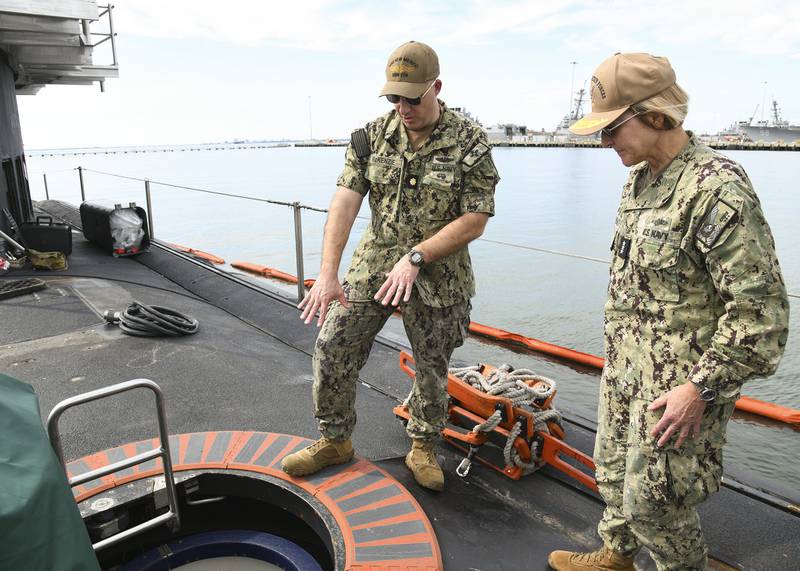WASHINGTON — The U.S. Navy this month highlighted the values the service is using to shape its cyberspace investments and improve its day-to-day digital posture, including what one official described as the ability to “fight hurt.â€
The Cyberspace Superiority Vision, announced Oct. 28, contains three tenets: secure, survive and strike. The pillars, according to the documents, are “fundamental to maintaining maritime dominance†and ensuring Navy and Marine Corps operations proceed smoothly across increasingly cyber-contested environments.
The right cyber investments are critical, officials say, as the U.S. positions itself for a fight against technologically advanced opponents such as China and Russia after decades of focusing on counterterrorism and less-equipped forces in the Middle East.
The superiority plan was teased earlier this year by Chris Cleary, the Navy’s principal cyber adviser.
“It’s not only important that we build the foundation — data science, all the things that enable almost everything that we do right now — but how do we really apply this to warfighting techniques,†Cleary said last month at the Defense Talks conference in Pentagon City. “We talk about secure, survive, strike.â€
The three factors are meant to work in concert, producing a sum that is great than its parts. The combination is also meant to fortify cybersecurity, shielding sensitive information from prying eyes, while providing commanders the tools they need to virtually reach out and ding a target.
RELATED

“At the end of the day, the Department of Defense is here to engage our adversaries. The Columbia-class submarine does not deliver humanitarian aid,†Cleary said. “And as we look at our ability to deliver effects in and through cyberspace, I want our adversaries to be every bit as nervous looking down the barrel of our non-kinetic capabilities as they are every one of our kinetic capabilities.â€
An analysis published by the International Institute for Strategic Studies in 2021 ranked the U.S. as the world’s top cyber power. Both China and Russia were placed in the second tier, alongside Australia, France, the U.K. and others.
Sailors and other military members in February were warned they are targets for cyberattacks amid turbulent Sino-U.S. relations and Russia’s invasion of Ukraine. In a memo at the time, Navy Vice Adm. Jeffrey Trussler said cyberattacks against U.S. infrastructure and businesses were “increasing in frequency and complexity,†and that most anyone can be baited for access and information.
Hackers previously exploited mistakes on Navy and private networks by stealing or brute-forcing credentials as well as installing malware, according to Trussler’s unclassified bulletin. Defense News in June 2018 reported Chinese-sponsored cyberattacks breached a Navy contractor’s computers, jeopardizing information related to secret work on an anti-ship missile.
“As we engage with our adversaries, our critical infrastructure, our weapon systems are going to be targeted,†said Cleary, who advises Navy and Marine Corps leadership and works to implement the Pentagon’s broader cyber strategy. “The Department of Navy has to learn how to fight hurt. We all really need to learn how to fight hurt.â€
Colin Demarest was a reporter at C4ISRNET, where he covered military networks, cyber and IT. Colin had previously covered the Department of Energy and its National Nuclear Security Administration — namely Cold War cleanup and nuclear weapons development — for a daily newspaper in South Carolina. Colin is also an award-winning photographer.








